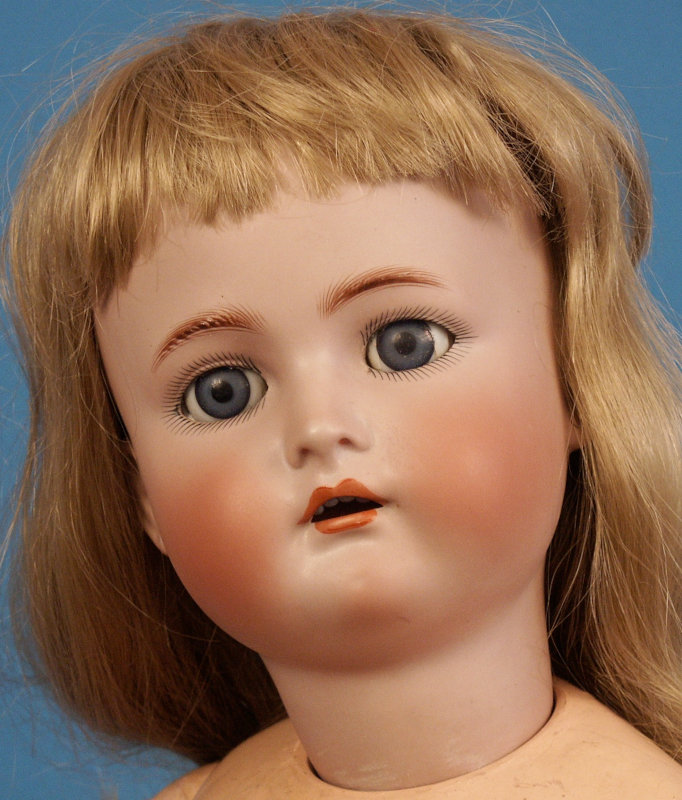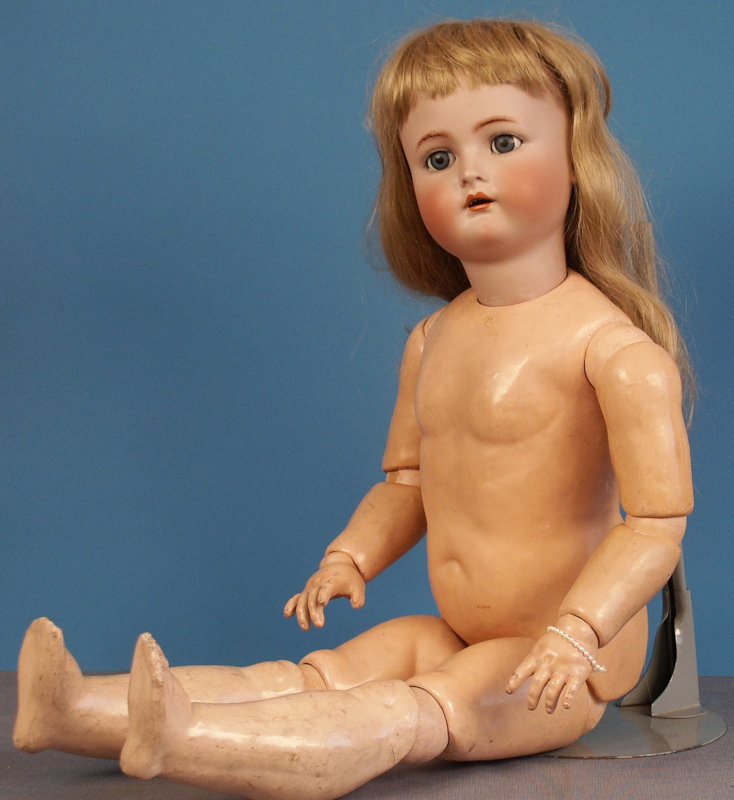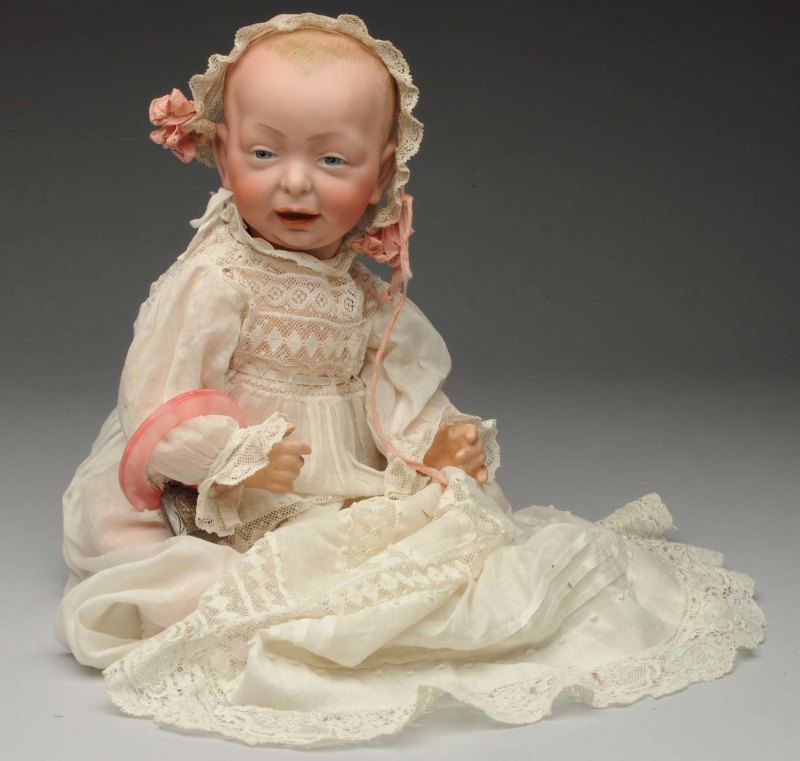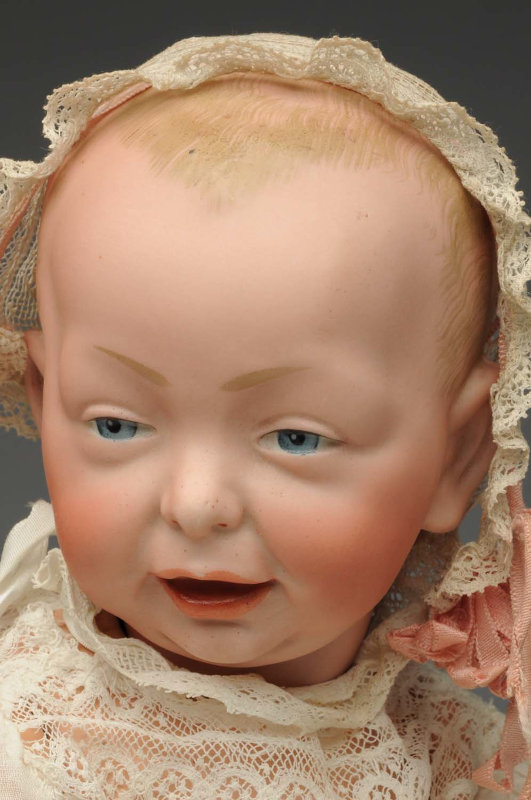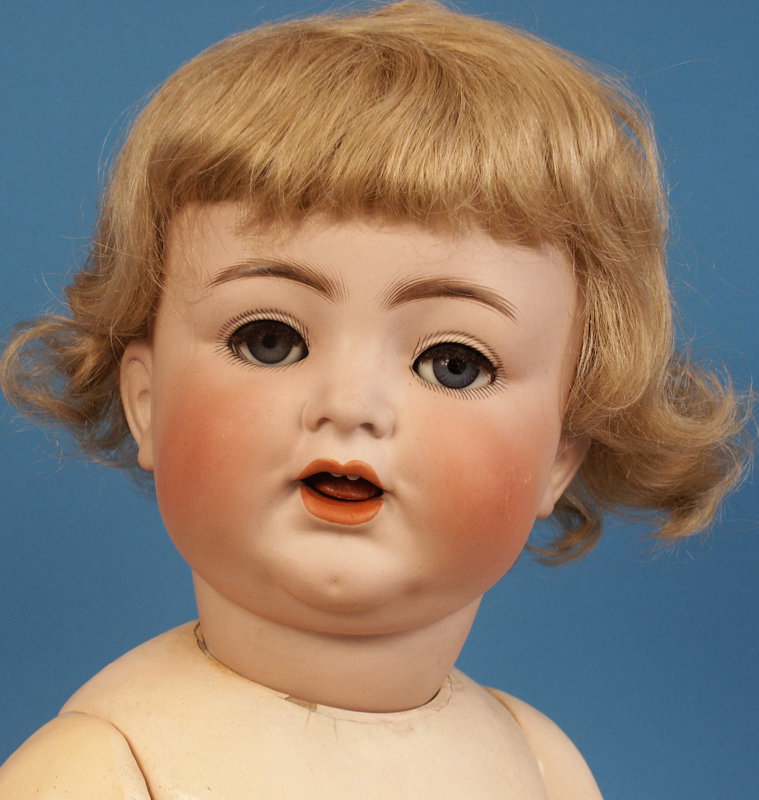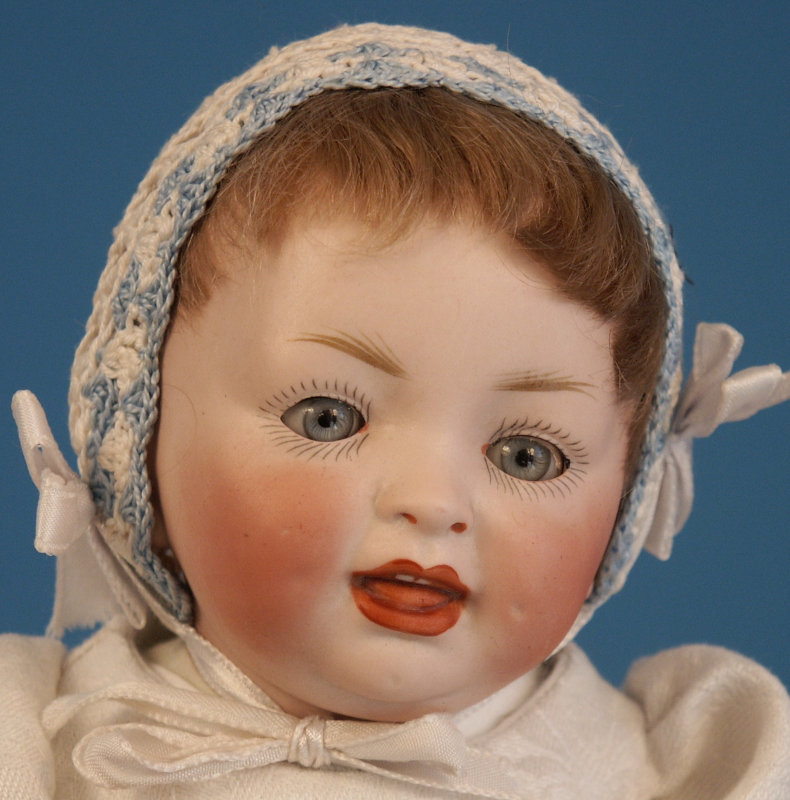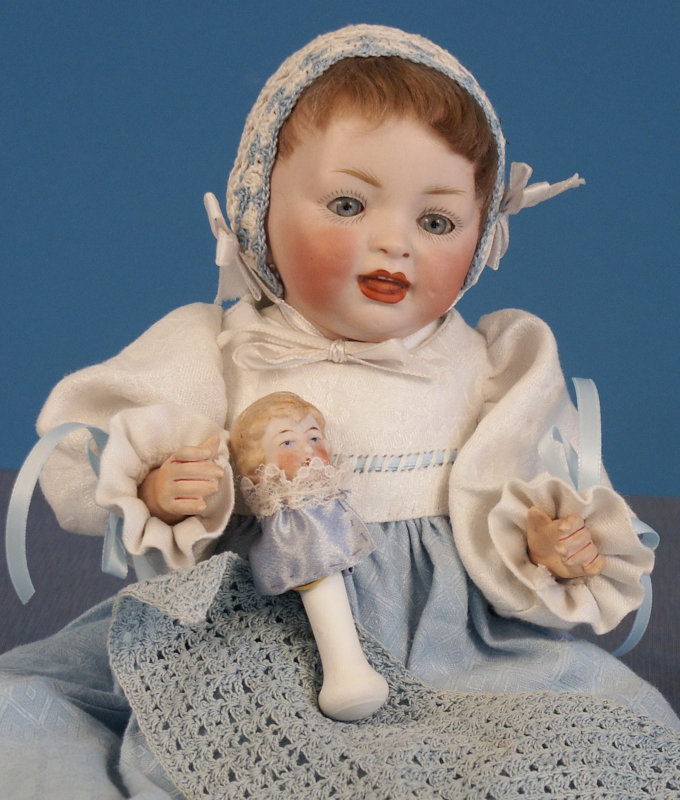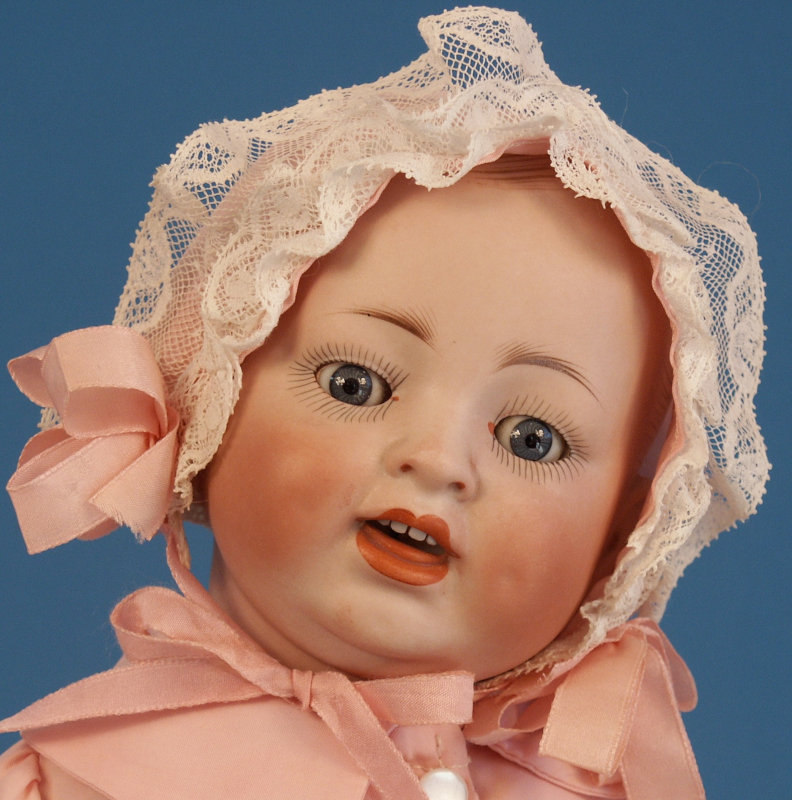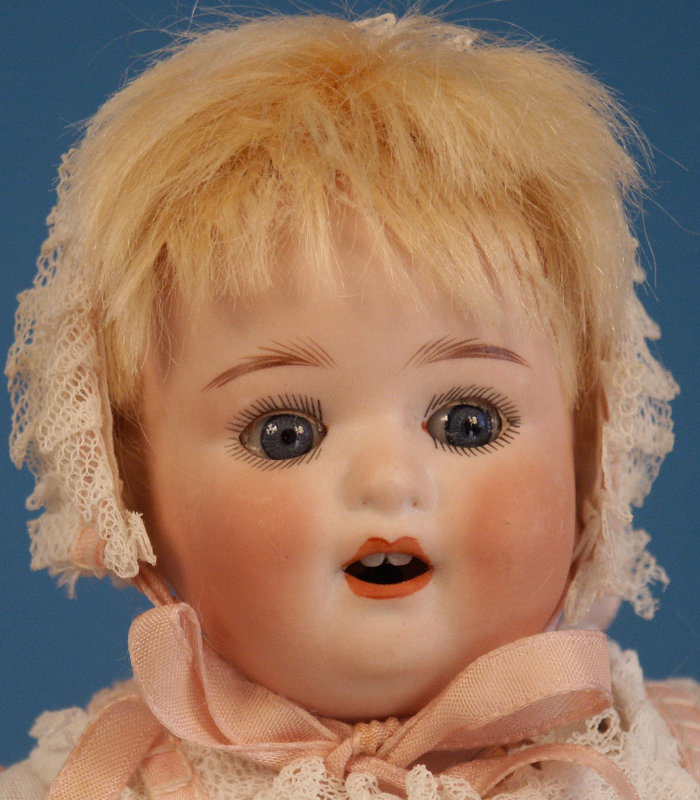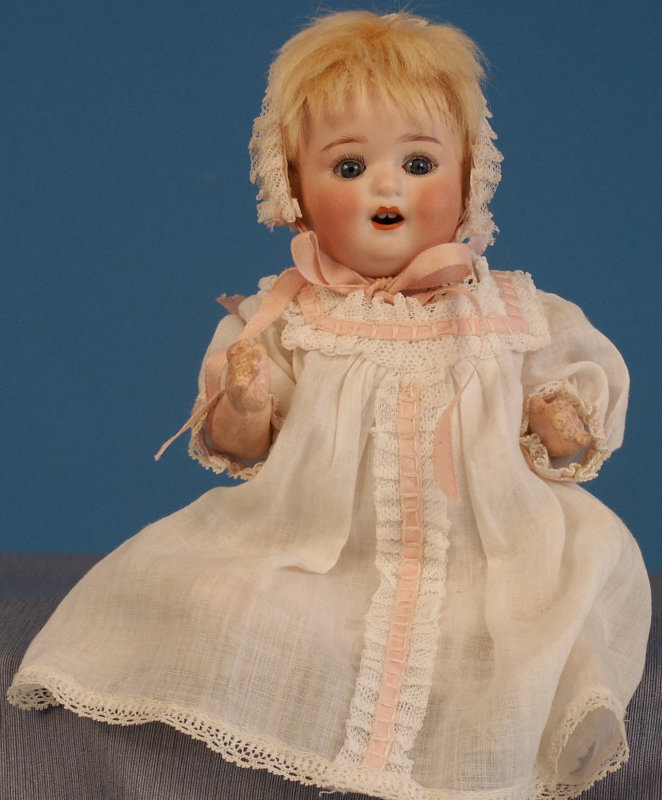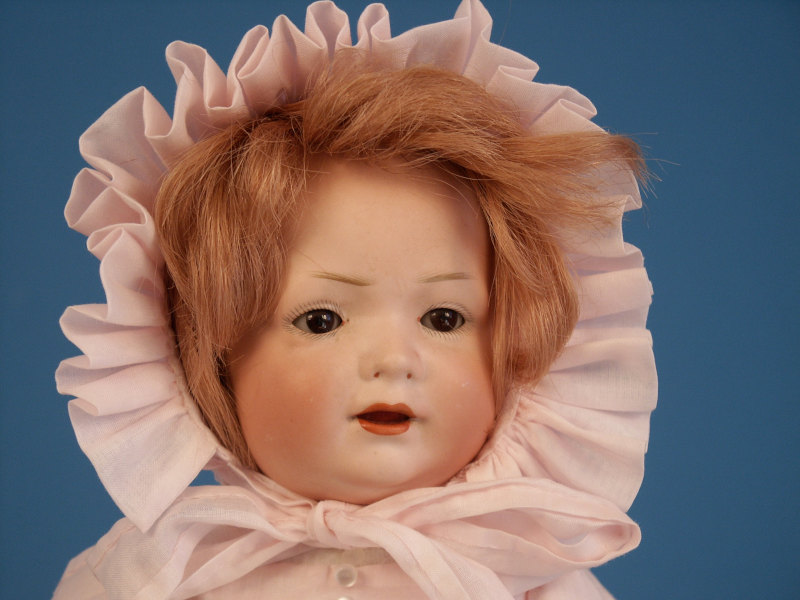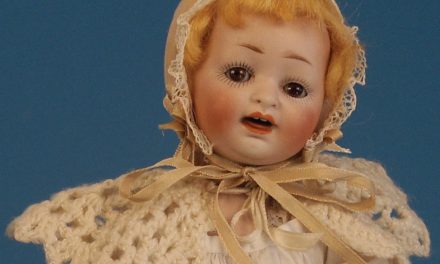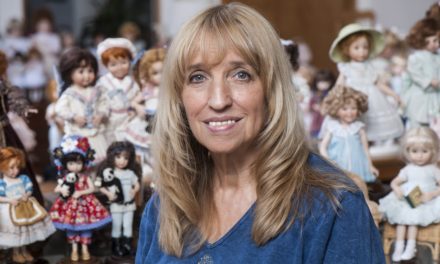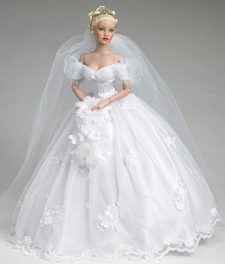By Jan Foulke
Except where noted, photos are courtesy of the Foulke Archives
Depictions of babies are such a large part of the doll market today, you might think they’ve always been popular, but that’s not so. As far as the history of dolls is concerned, baby dolls are a fairly recent type, having first appeared on the market in 1909 — a little over 100 years ago.
Dolls as we know them today hardly existed before the 16th century. The earliest commercial dolls represented adults and were made from wood, mostly in England, though some were produced in what is now Germany, Austria, and northern Italy. With a prospering economy in the 19th century, dolls became more popular. The German papier-mâché heads on kid bodies, china and parian (a type of bisque porcelain) shoulder heads, and French fashion dolls tended to be mostly adults. Though some of these dolls were dressed in infant clothing to represent babies, the dolls’ faces and bodies remained adult. A few dolls of that period, such as the china-head kinderkopfs, papier-mâché dolls made by Sonneberg Taufling, and English wax dolls, did represent children, but they were in the minority.
The bisque-head child doll was a development of the French doll industry in the late 1870s and soon dominated both French and German markets, making the adult-style dolls old-fashioned. At this time, some child dolls were dressed in infant clothing, although the dolls had older child faces and standard child bodies.
But in the early 1900s, there was a transformative event in the doll world. It was called the Puppen Reform Movement, mostly centered in Munich, Germany. It was a rebellion against the beautiful and idealistic French-style dolls and an attempt to create dolls that were more lifelike and realistic, dolls that looked like real children and were dressed in children’s simple everyday clothing instead of fancy lace and ruffled satin outfits. The first makers of the new Puppen Reform dolls were individual artists, including Marian Kaulitz and Käthe Kruse, but it didn’t take the mainline German doll producers long to see some buyers snapping up the new style dolls and to want a share of this market.
Kammer and Reinhardt, a respected dollmaker from Waltershausen, Germany, was in the forefront of this new movement. In its 1911 anniversary booklet, K&R representatives said they recognized that the criticism of the old-style French and German bisque doll was justified. The company had been producing virtually the same model for 23 years. And while they thought the new models presented at the Munich Exposition were ugly, except for the colorful regional costumes the dolls wore, they did see merit in this new idea. Therefore, they consulted a well-known artist in Berlin, Arthur Lewin-Funcke. When he showed them a bust of a 6-week-old baby, they recognized the beauty of the head but hesitated to produce it as a doll because it was so realistic.
Yet they followed their hunches, and the result was Baby, mold 100, a dramatic new type of doll and the first of K&R’s revolutionary Character Doll series. The new designs were shown in the April 1909 Playthings trade magazine. They were advertised as “produced from life models.” The new doll was not an instant success. Many traditional customers considered the doll too innovative and arty. Some had to be given away as samples with regular orders to get the new designs in circulation. Retailers were cautious in their ordering, but those who ordered soon sold out and ordered more, so the move eventually turned out to be a success.
Baby’s design was a departure from the traditional dolly face. Instead of a mohair or human-hair wig, the doll had a solid dome head with painted, brush-stroked wavy hair and a hint of molded hair at the very top of the forehead and the nape of the neck. Instead of glass sleeping eyes, Baby had molded and painted eyes, with a prominent upper lid and a rounded eyeball with lovely painted detail in the iris and pupil, including a white-dot highlight as well as shading around the iris and a dark eyelash line across the upper lid. Instead of a bland, vacant expression, the face is smiling.
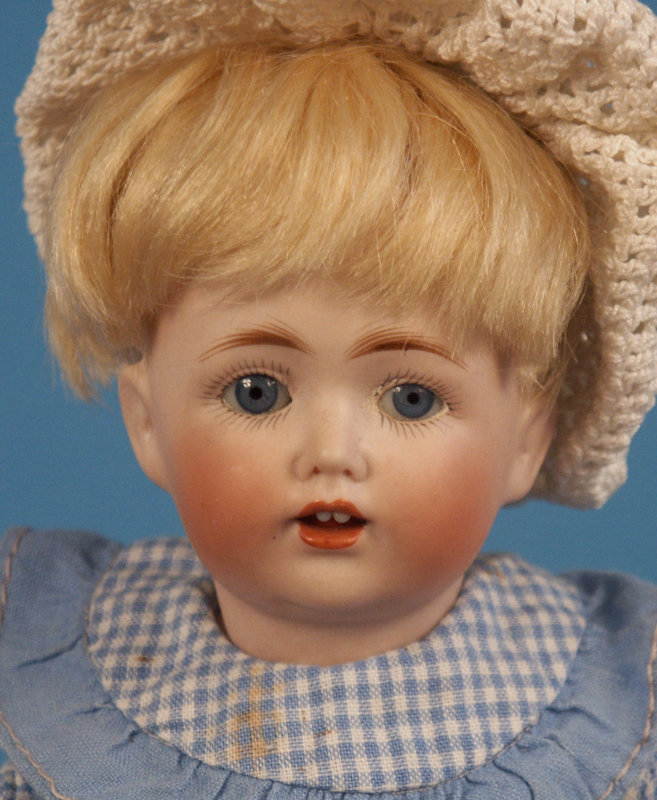
The detailed modeling is such a departure from the dolly face that one can understand K&R’s initial reluctance to produce the model. There are pronounced creases under the eyes, dimples on each side of the mouth, and a prominent cleft under the mouth, as well as a pointed first chin and a rounded second one. The mouth is of the open/closed type, which means that, although the lips are parted, there is no actual cut through the bisque. The bottom lip is puffy, just like a real baby’s. Baby has a molded tongue but no teeth, as befits a 6-week-old. The bisque is of excellent quality, made for K&R by the Simon & Halbig porcelain factory.
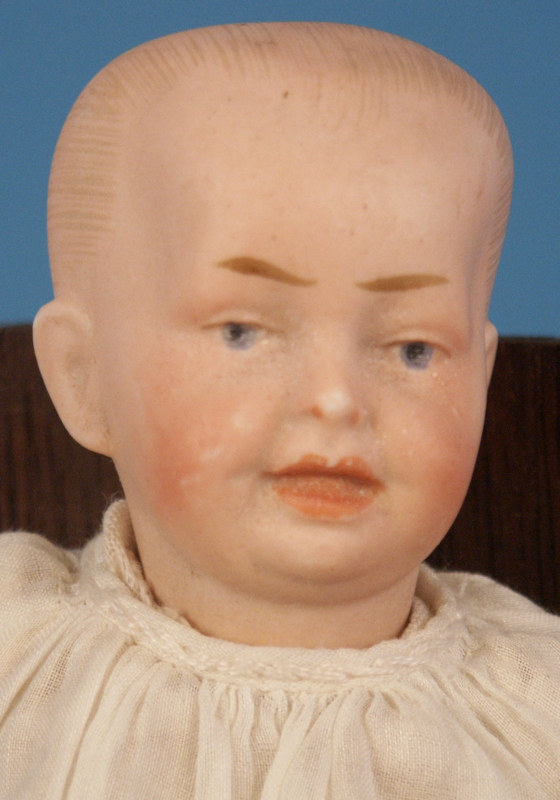
The first Baby models were produced on standard ball-jointed composition bodies, but within a few months they were being presented on new composition five-piece baby bodies modeled with curved arms and legs. They had especially nice modeling on the legs, with dimpled knees and nice fat rolls on the upper thighs and at the ankles. The torsos featured a rounded tummy with a belly button and molded breasts in the front with shoulder blade and spine details in the back.
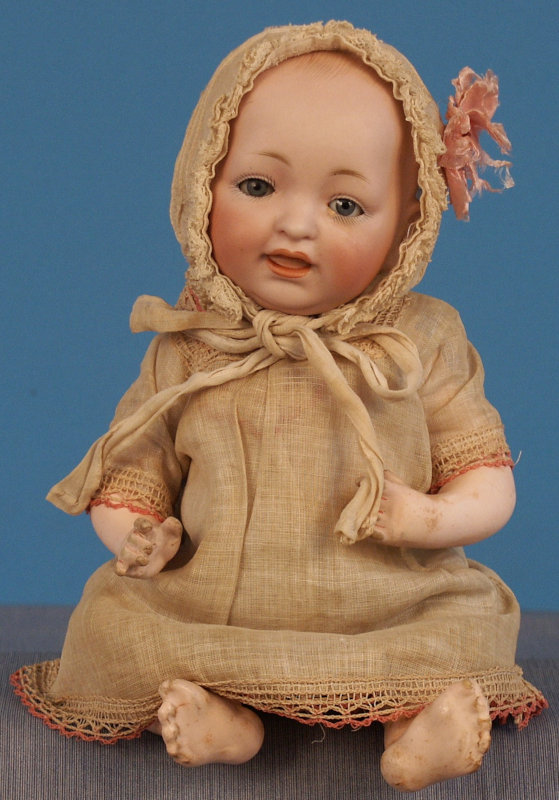
When other doll producers saw the success of these new baby dolls, they scurried to design and make their own. Thus, the baby doll as a separate doll form was established in its own right.

